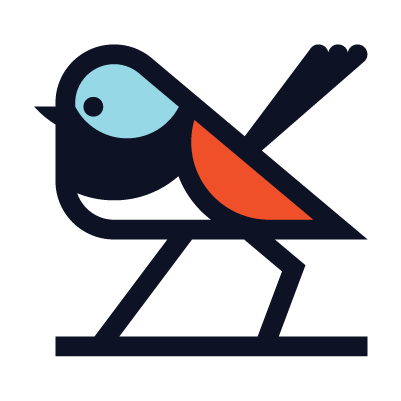The Mentawai Islands: Surfing/Birding
I’ve had a little break in between blog posts while I've been on holidays of sorts. I’ve just returned from a trip I’ve dreamed about for a very long time, as many Australian birdwatchers have, out into Princess Parrot country. I’ll write that trip up down the track, it deserves a bit more time to reflect on before writing about properly. In short – it went very well.
Prior to that dream trip, I was over on the Mentawai islands off of Sumatra. This is another dream trip but one dreamt about by surfers more so than birdwatchers. I was over there with my surfing hat well and truly on, or at least a whole load of zinc smeared over the tips of my ears to make sure they don’t burn off while out in the equatorial sun. But you can’t spend all day in the water, and I couldn’t resist the birdlife of an island brand new to me. With two endemic species, one recently raised to full species status, I’d have had to hand back my guiding licence if I didn’t at least point my binoculars at a few birds rather than just out to sea for surf checks.
Those two endemic birds are the Mentawai Scops-Owl, an adorable little bundle and the colourful Mentawai Malkoha. Both of which are relatively difficult to come by. I had brief views of the Scops-Owl on a rainy night and flyovers from the Malkoha on two separate birding adventures into some more intact rainforest in the centre of the island. The Mentawai islands are also home to some near endemic species – mostly labelled Barusan in reference to the greater island chain to the north. These species were far more confiding in their presence. The Barusan Cuckoo-Dove sat nicely on a powerline where I could peer at it from the seat of scooter and the plentiful and vocal Barusan Bulbuls greeted me in the gardens outside our villa every time I walked back from a surf.
Barusan (Olive-winged) Bulbul
The birding is different over there. I guess you would very rarely be sitting on a scooter with your binoculars strapped around your shoulders in Australia, but I don’t just mean in practice. With the caged bird trade still being in full force throughout the Indonesian Archipelago, birds that I’m told were once common by our knowledgeable hosts, like the Oriental Magpie-Robin, have been trapped and caged to near localised extinction in some areas. All for their pretty song. I’d suggest a birdbath or even a feeder might achieve the same result as a cage if the song is what you’re after, but that’s another whole blog. The point is more so that little tactics of gaining better views like pishing or a bit of playback just don’t really work that well on the limited numbers of songbirds that are left around. On top of that, the birds and other native animals are generally petrified of humans with their incessant noise and destruction, slingshots and air rifles. And humans are everywhere in Indonesia, even on the remote tips of small island chains. It took a little more patience to achieve close up views of birds such as Sumatran Drongos, Blue-crowned Hanging Parrots or Copper-throated Sunbirds.
Copper-throated Sunbird
This little trip put in perspective how lucky we are in Australia to experience the natural world the way we do. This is particularly true in the Southwest and the rest of the state of Western Australia where we have our group of endemic birds so readily available. We can take short drives from populated centres to nature reserves and national parks mostly devoid of human activity and access populations of birds found nowhere else in relatively healthy numbers. Call me spoiled but I do prefer it that way!
Either way, I would still like to explore the birdlife of the Indonesian Archipelago further. Especially in that in many ways those islands are Western Australia’s closest neighbours. Perhaps I’ll get to experience places deeper into the mountains of Indonesia that have the same feeling as I get at home in the Southwest and while I’m there expand on the contact base I already have in parts of the archipelago.
Who knows, one day I might be able to facilitate tours with local guides throughout Southeast Asia 😉
Stork-billed Kingfisher


